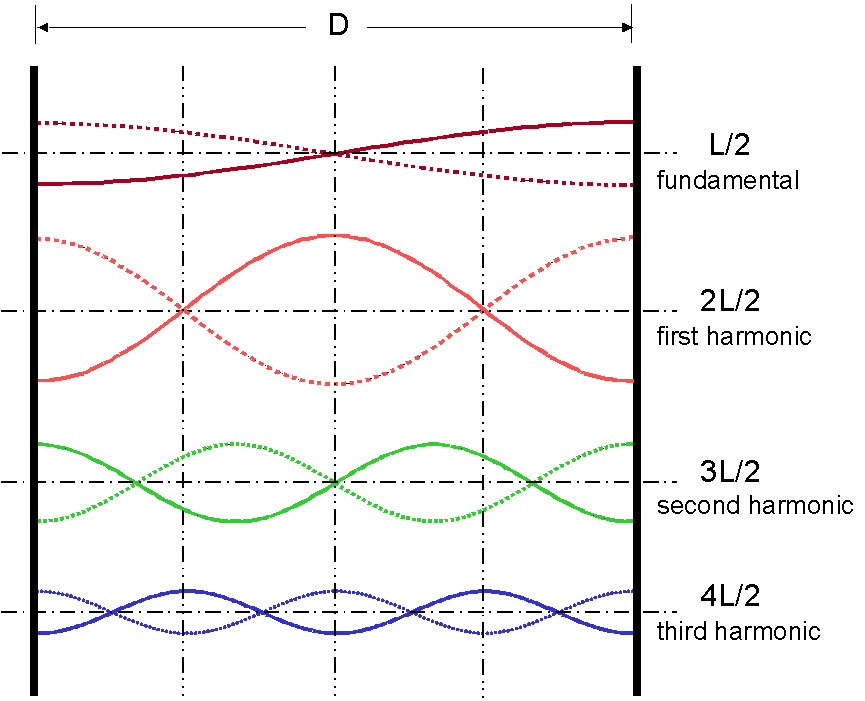The Mechanics of Hearing
42
Learning Objectives
Be able to explain the difference between constructive and destructive interference.
Be able to define the fundamental tones and harmonics in complex tones.
Constructive interference is when two waves superimpose (place an object over another object) and the resulting wave has a higher amplitude than the previous waves. Destructive interference is when two waves superimpose and cancel each other out (like adding a positive and negative number), leading to a lower amplitude. While pure constructive and pure destructive interference do occur, they require precisely aligned identical waves. The superposition of most waves produces a combination of constructive and destructive interference, and can vary from place to place and time to time. Sound from a stereo, for example, can be loud in one spot but quiet in another. Varying loudness means the sound waves add partially constructively and partially destructively at different locations. A stereo has at least two speakers creating sound waves, and waves can reflect from walls. All these waves superimpose. An example of sounds that vary over time from constructive to destructive is found in the combined whine of airplane jets heard by a stationary passenger. The combined sound can fluctuate up and down in volume as the sound from the two engines varies in time from constructive to destructive.

Pitch is essentially the perceptual correlate of waveform periodicity, or repetition rate: The faster a waveform repeats over time, the higher is its perceived pitch. The most common pitch-evoking sounds are known as harmonic complex tones. They are complex because they consist of more than one frequency, and they are harmonic because the frequencies are all integer multiples of a common fundamental frequency (F0). For instance, a harmonic complex tone with a F0 of 100 Hz would also contain energy at frequencies of 200, 300, 400 Hz, and so on. These higher frequencies are known as harmonics or overtones, and they also play an important role in determining the pitch of a sound.

CC LICENSED CONTENT, SHARED PREVIOUSLY
Lumen Learning, Boundless Physics, Interactions with Sound Waves
Provided by: Boundless.com.
URL: https://courses.lumenlearning.com/boundless-physics/chapter/interactions-with-sound-waves/
License: CC-BY-SA
Adapted by: Izzy Kosobud
NOBA, Hearing
Provided by: University of Minnesota
URL: https://nobaproject.com/modules/hearing
License: CC BY-NC-SA 4.0

